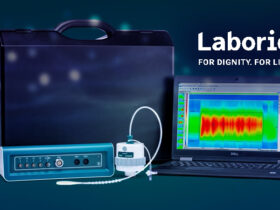The Janssen Pharmaceutical Companies of Johnson & Johnson announced updated efficacy and safety results from the teclistamab Phase 1/2 MajesTEC-1 study.1 Teclistamab is an investigational, off-the-shelf, T-cell redirecting bispecific antibody targeting B-cell maturation antigen (BCMA), which is being studied in patients with relapsed or refractory multiple myeloma (RRMM).1 The data were featured as part of an oral session during the 2022 American Society of Clinical Oncology (ASCO) Annual Meeting. Applications seeking approval of teclistamab are currently under health authority review in the United States (U.S.) and Europe.
“These encouraging data reinforce the potential of teclistamab as a monotherapy for eligible patients with heavily pretreated multiple myeloma, in need of new treatment options.”
The multicohort, open-label, Phase 1/2 MajesTEC-1 study is investigating the safety and efficacy of teclistamab in patients with RRMM who received at least three prior lines of therapy, including an immunomodulatory agent, a proteasome inhibitor and an anti-CD38 antibody.3 As of March 2022, 165 patients were treated with teclistamab at the recommended subcutaneous (SC) Phase 2 dose (RP2D) of 1.5 mg/kg preceded by step-up doses of 0.06 mg/kg and 0.3 mg/kg across both Phase 1 (NCT03145181) and Phase 2 (NCT04557098) of the study.1
Longer Follow-up from MajesTEC-1 Study in Patients with Triple Class Exposed Multiple Myeloma (Abstract #8007)
At a median follow-up of 14.1 months (range, 0.26-24.4), an overall response rate (ORR) of 63 percent (95 percent Confidence Interval [CI], range, 55.2-70.4) was observed in patients with triple class exposed multiple myeloma, with a complete response (CR) or better achieved in 39.4 percent of patients.1 Study participants had three or more prior lines of therapy, with a median of five prior lines, including a prior proteasome inhibitor, immunomodulatory drug and anti-CD38 antibody.1 The majority of patients were triple-class refractory and/or refractory to their last line of treatment.1 Although response duration data are not mature, the median duration of response at this time is 18.4 months and has not been reached in patients who achieved a CR or better (95 percent CI, 14.9 not estimable).1 This suggests responses to teclistamab were durable and deepened over time.1 The medium progression-free survival (PFS) was 11.3 months (95 percent CI, 8.8–17.1).1 Adverse events (AEs) were low-grade for the most part and manageable with no new safety signals seen.1
These results from the MajesTEC-1 study were also simultaneously published online in The New England Journal of Medicine.2
“The longer term results from the MajesTEC-1 study suggest that patients are able to achieve deep and durable responses when treated with teclistamab,” said Maria-Victoria Mateos, M.D., Ph.D., Consultant Physician in Haematology, University Hospital of Salamanca.* “These encouraging data reinforce the potential of teclistamab as a monotherapy for eligible patients with heavily pretreated multiple myeloma, in need of new treatment options.”
Also Read: Thales Major Citizen Survey Predicts Warm Welcome for New European Digital ID Wallet (EDIW)
No new safety signals were observed with longer follow-up.1 In 14.1 month follow-up data presented, the most common grade 3/4 haematologic AEs were neutropenia (64.2 percent); anaemia (37 percent); lymphopenia (32.7 percent) and thrombocytopenia (21.2 percent).1 Infections occurred in 76.4 percent of patients (44.8 percent grade 3/4).1 The most common nonhaematologic AE was cytokine release syndrome (CRS), all of which were grade 1/2 except for one transient grade 3 CRS (72.1 percent all grade).1 The median time to CRS onset was two days (range, 1-6) and median duration was two days (range, 1-9).1 There were five treatment-related deaths, and dose reductions and discontinuations due to AEs were infrequent.1

































